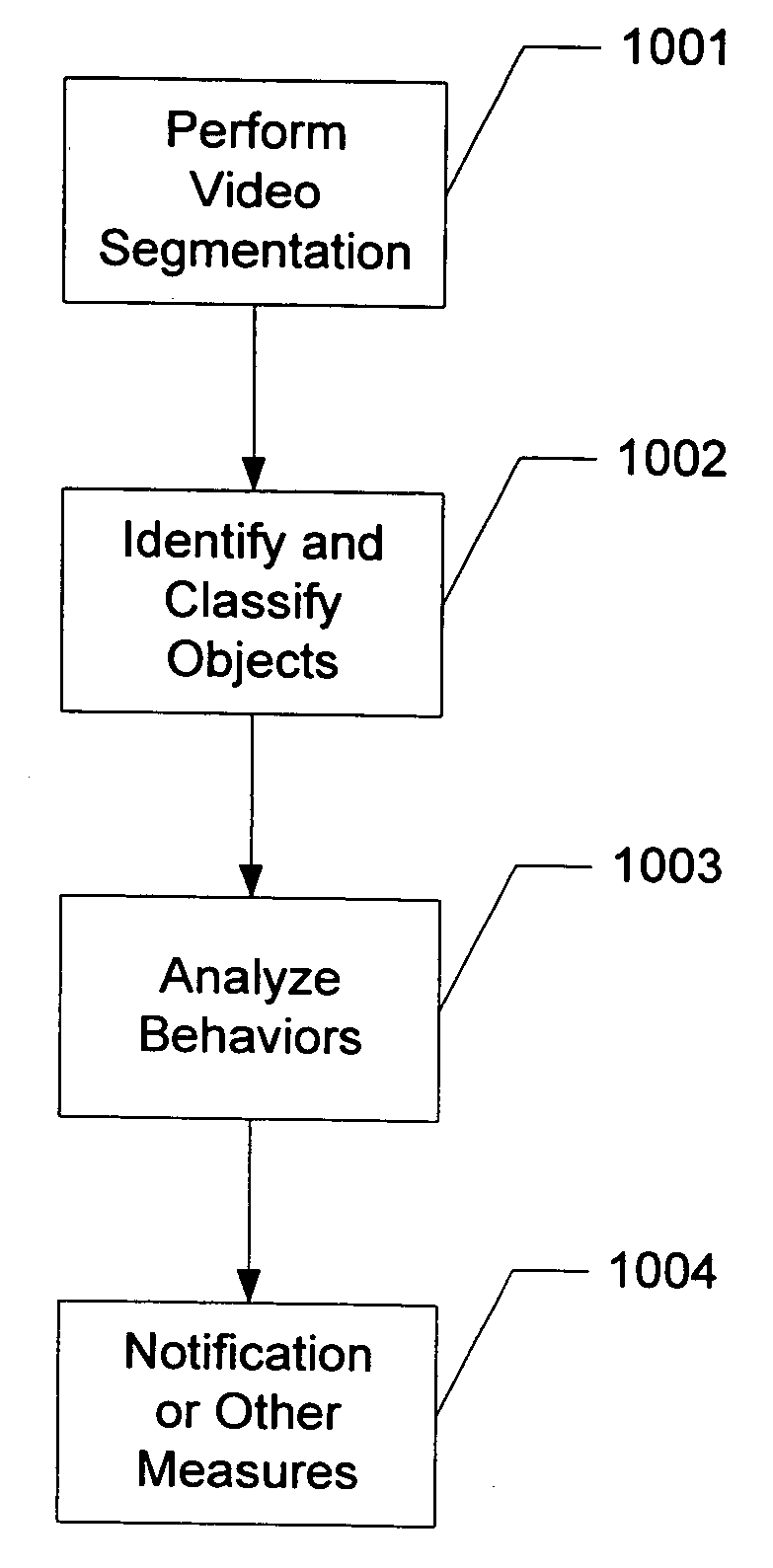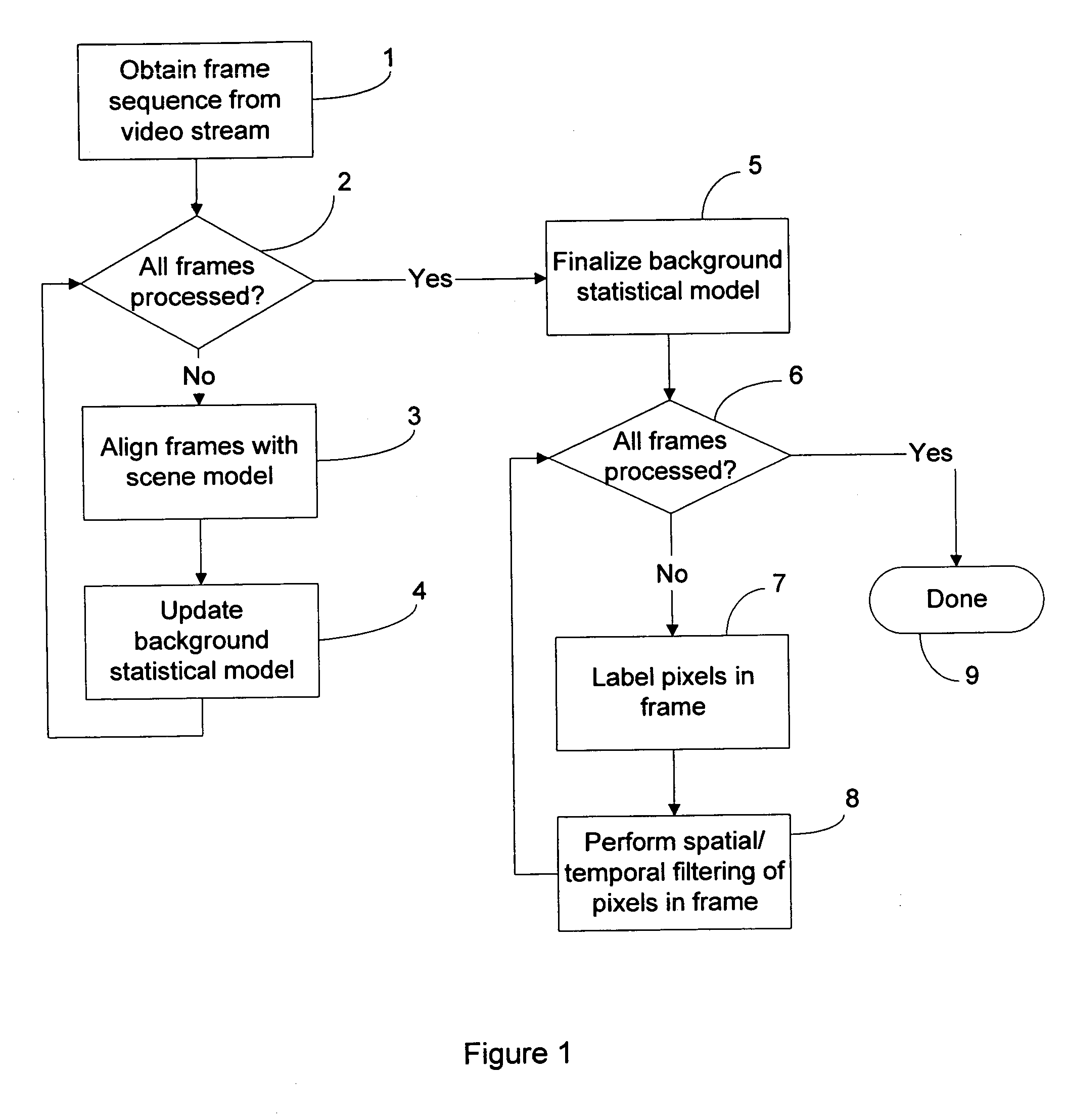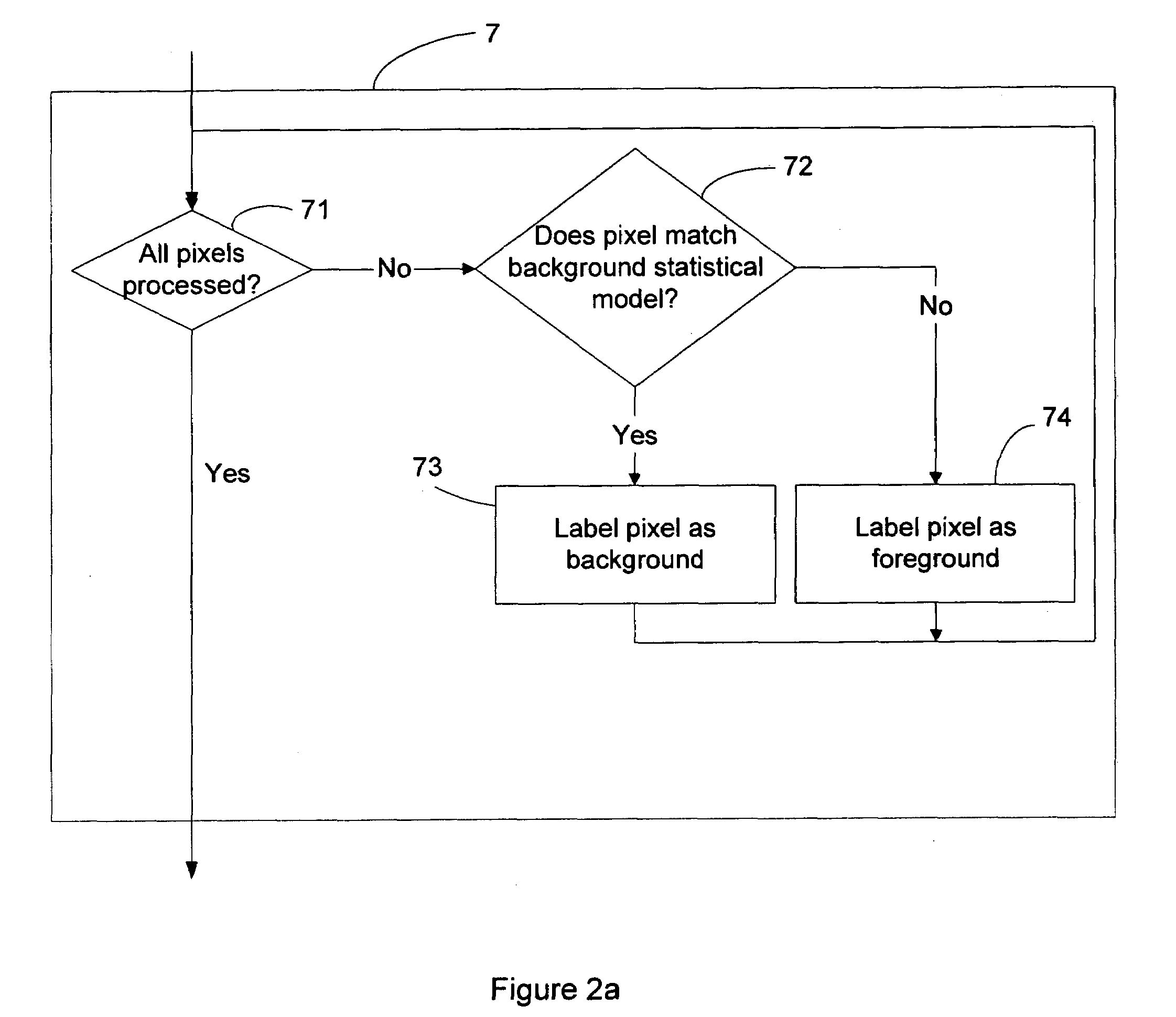Video segmentation using statistical pixel modeling
a statistical pixel modeling and video segmentation technology, applied in image data processing, image enhancement, instruments, etc., can solve the problems of difficult utilization and inaccurate for small foreground objects, not easy to identify and automatically distinguish, and require excessive processing power and memory
- Summary
- Abstract
- Description
- Claims
- Application Information
AI Technical Summary
Benefits of technology
Problems solved by technology
Method used
Image
Examples
first embodiment
1. Two-Pass Segmentation
[0035]The first embodiment of the invention is depicted in FIG. 1 and corresponds to a two-pass method of segmentation. As shown in FIG. 1, the method begins by obtaining a frame (or video) sequence from a video stream (Step 1). The frame sequence preferably includes two or more frames of the video stream. The frame sequence can be, for example, a portion of the video stream or the entire video stream. As a portion of the video stream, the frame sequence can be, for example, one continuous sequence of frames of the video stream or two or more discontinuous sequences of frames of the video stream. As part of the alignment step, the scene model is also built and updated.
[0036]After Step 1, in Step 2, it is determined whether or not all frames have yet been processed. If not, the next frame is taken and aligned with the underlying scene model of the video stream (Step 3); such alignment is discussed above, and more detailed discussions of alignment techniques ma...
second embodiment
2. One-Pass Segmentation
[0061]FIG. 4 depicts a flowchart of a one-pass segmentation process, according to a second embodiment of the invention. Comparing FIG. 4 with FIG. 1 (the first embodiment), the second embodiment differs in that there is only a single pass of processing for each frame sequence. This single pass, as shown in Steps 2, 3, 31, 32, 8 in FIG. 4, incorporates the processes of the second pass (Steps 5–8 in FIG. 1) with the first pass (Steps 2–4 in FIG. 1), albeit in a modified form, as will be discussed below.
[0062]As in the case of the first embodiment, the second embodiment (one-pass process), shown in FIG. 4, begins by obtaining a frame sequence (Step 1). As in the first embodiment, the process then performs a test to determine whether or not all of the frames have yet been processed (Step 2). Also as in the first embodiment, if the answer is no, then the next frame to be processed is aligned with the scene model (Step 3). As discussed above, the scene model compon...
third embodiment
3. Modified One-Pass Segmentation
[0086]While the one-pass approach described above has a lower latency than the two-pass approach, it does have a disadvantage in regard to the background statistical model. In particular, the cumulative statistical modeling approach used in the one-pass embodiment of the invention may stabilize on a non-representative statistical model for an element (i.e., pixel, region, etc.; that is, whatever size element is under consideration). If the values (e.g., chromatic values) of frame elements corresponding to a particular element of the video scene fundamentally change (i.e., something happens to change the video, for example, a parked car driving away, a moving car parking, the lighting changes, etc.), then the scene model element will no longer accurately represent the true scene. This can be addressed by utilizing a mechanism for dynamically updating the background statistical model so that at any given time it accurately represents the true nature of...
PUM
 Login to View More
Login to View More Abstract
Description
Claims
Application Information
 Login to View More
Login to View More - Generate Ideas
- Intellectual Property
- Life Sciences
- Materials
- Tech Scout
- Unparalleled Data Quality
- Higher Quality Content
- 60% Fewer Hallucinations
Browse by: Latest US Patents, China's latest patents, Technical Efficacy Thesaurus, Application Domain, Technology Topic, Popular Technical Reports.
© 2025 PatSnap. All rights reserved.Legal|Privacy policy|Modern Slavery Act Transparency Statement|Sitemap|About US| Contact US: help@patsnap.com



